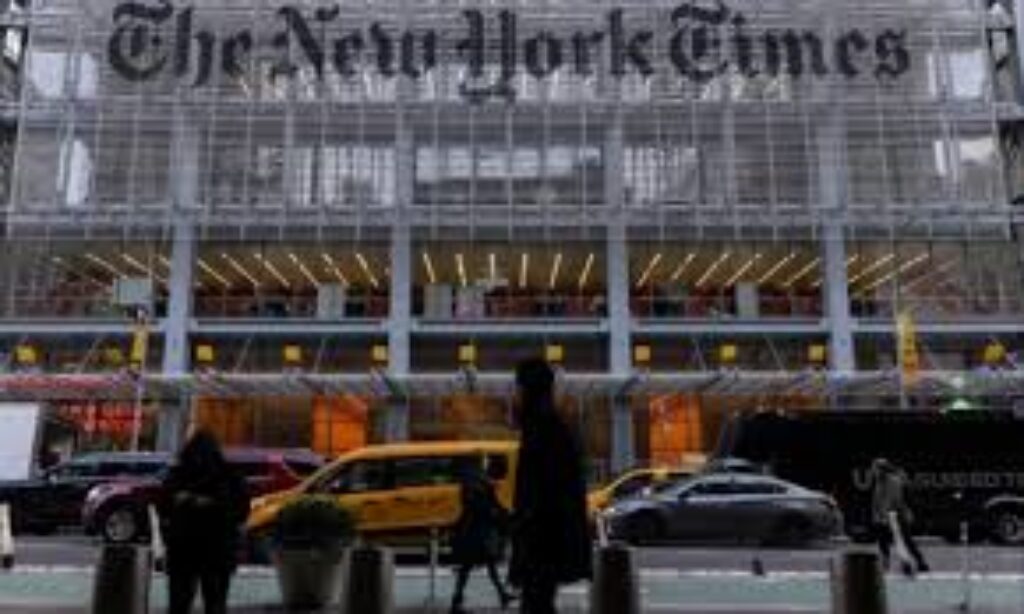
Trump’s $15 billion New York Times lawsuit denied: Unlawful
Former President Donald Trump’s \$15 billion defamation lawsuit against The New York Times has been denied, marking a significant development in the ongoing tension between public figures and the media. Filed amid allegations of defamation, the lawsuit claimed that certain articles and publications had damaged Trump’s reputation, business interests, and public image. The court, however, dismissed the case as “unlawful” in its original form, emphasizing procedural errors and the need for a clear legal structure.
The Background
Trump’s lawsuit targeted The New York Times, four of its journalists, and a publishing house. The central claim was that reporting and a book associated with the newspaper contained false statements and misinformation that harmed him financially and politically. The lawsuit sought an extraordinary \$15 billion in damages, making it one of the largest defamation cases in recent U.S. history.

The filing came in the context of Trump’s ongoing scrutiny by media outlets, both during and after his presidency. He argued that the reporting was not just critical but false, framing it as part of a broader campaign to undermine his credibility.
Why the Lawsuit Was Denied
The court’s dismissal was not based on the merits of the claims themselves but rather on procedural grounds. The judge noted that the lawsuit was overly long, poorly organized, and included extensive rhetoric unrelated to the legal claims. In other words, the filing resembled a political statement more than a legal document.
Federal rules require lawsuits to provide a “short and plain statement” of the claim. Complaints must clearly outline the alleged wrongdoing, identify the parties involved, and specify the damages being sought. By failing to meet these standards, the lawsuit was deemed improper, and the court refused to proceed with it in its original form.
Importantly, this dismissal does not permanently bar Trump from pursuing his claims. He has the option to refile an amended complaint, provided it meets page limits, clarity, and procedural requirements set by the court. This decision is procedural rather than substantive, meaning that the question of whether The New York Times defamed Trump has not yet been addressed.
The Legal Context
Defamation cases involving public figures, especially political leaders, are notoriously difficult to win. In the United States, public figures must prove “actual malice,” meaning that the publication knowingly spread false information or acted with reckless disregard for the truth. This high standard is designed to protect freedom of speech and ensure robust public debate.
Given Trump’s status as a former president and public figure, any defamation claim would face intense scrutiny. Even if procedural hurdles were cleared, proving that the newspaper acted with actual malice would be a formidable challenge.
Broader Implications
This ruling highlights several broader issues in American media and law. First, it underscores the importance of procedural compliance in litigation, even for high-profile figures. Courts do not allow the filing of cases that are primarily political or rhetorical; they require organized, concise, and legally sound complaints.
Second, the case emphasizes the delicate balance between public criticism and defamation. Newspapers and media outlets enjoy strong protections under the First Amendment, particularly when reporting on public figures. While errors can occur, the bar for successful defamation suits against prominent individuals remains intentionally high.
Finally, the dismissal illustrates how litigation can sometimes be used as a tool of public messaging. Lawsuits of this size and visibility can attract media attention and influence public perception, regardless of their ultimate legal success.
Moving Forward
Trump now has the opportunity to file a revised complaint that adheres to the court’s requirements. This next filing will need to focus squarely on legal claims, avoiding political rhetoric and lengthy narrative digressions. Whether the amended lawsuit will succeed remains uncertain, given both the high standard for defamation and the scrutiny applied to public figures in U.S. courts.

For the media, this ruling reinforces the protections granted to journalists when reporting on public figures. For the public, it serves as a reminder that while lawsuits can make headlines, procedural rules and legal standards ultimately determine whether a case can move forward.
Conclusion
The denial of Donald Trump’s \$15 billion lawsuit against The New York Times is a notable example of how procedural rigor and legal standards shape high-profile defamation cases. While the lawsuit can be amended and refiled, the initial dismissal underscores the challenges faced by public figures seeking redress through the courts, as well as the protections afforded to the press in a free society.








